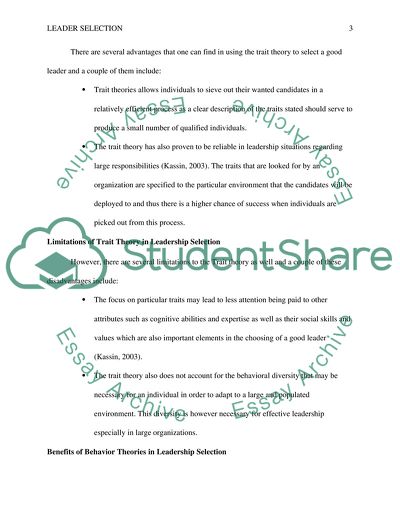Cite this document
(Leader Selection Essay Example | Topics and Well Written Essays - 2500 words - 1, n.d.)
Leader Selection Essay Example | Topics and Well Written Essays - 2500 words - 1. https://studentshare.org/psychology/1805324-topic-leader-selection
Leader Selection Essay Example | Topics and Well Written Essays - 2500 words - 1. https://studentshare.org/psychology/1805324-topic-leader-selection
(Leader Selection Essay Example | Topics and Well Written Essays - 2500 Words - 1)
Leader Selection Essay Example | Topics and Well Written Essays - 2500 Words - 1. https://studentshare.org/psychology/1805324-topic-leader-selection.
Leader Selection Essay Example | Topics and Well Written Essays - 2500 Words - 1. https://studentshare.org/psychology/1805324-topic-leader-selection.
“Leader Selection Essay Example | Topics and Well Written Essays - 2500 Words - 1”. https://studentshare.org/psychology/1805324-topic-leader-selection.


